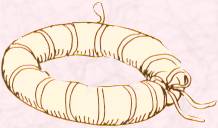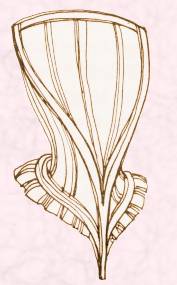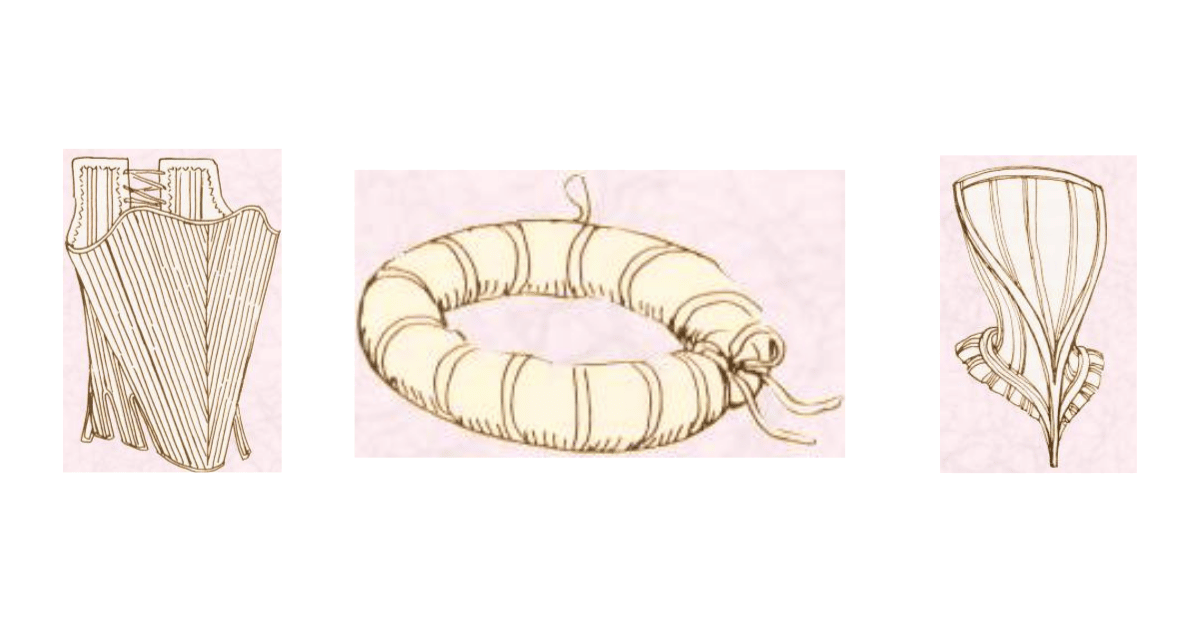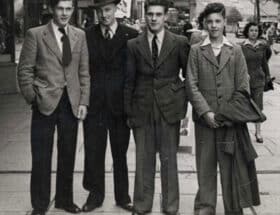By Pauline Weston Thomas for Fashion-Era.com Early Corset Fashion History
- Cretan Corsetry
- Greek Corsetry
- The Middle Ages
- 16th Century Iron Corsets
- Farthingale Petticoats
- Bum Rolls
- 17th Century Stays
- 17th Century Boned Bodices
Cretan Corsetry
Fashion history shows the first recorded corset came from Crete. The Cretan woman stood proudly bare breasted and the waist and hip corset shown in the header above is obviously a decorative part of her underwear.
For many centuries, both East and West, women and men have worn loose flowing robes. Elaborate layers of cloth indicated the rank or wealth of an individual. Sometimes to give shape to robes, the clothes were tied with a girdle or a sash. Later extra shaping was introduced by the use of a brooch or a pin. This type of clothing was popular among Greeks and Romans 3000 years ago.
Greek Corsetry
Greek women were corseted. Under the Greek Chiton, a leather band-style corset was worn and this gave definition to the hips and bust. From birth, girls were swaddled. For six months their arms and legs were bound in swaddling cloths restricting their movement and keeping limbs straight. Adolescent Greek girls were forced to keep trim. Their Greek mothers used woollen bands to keep the developing body slim.
The Middle Ages
The fashion history of the Middle Ages shows women covered up from head to foot.
In the Middle Ages, the idea prevailed that the body was sinful and underwear something rather shameful. But towards the end of the Middle Ages clothes were carefully cut and shaped to the body. Part of this shaping was achieved by cutting cloth on the true cross or the bias of the fabric grain.
In the 13th century, a corset was worn, but as in later centuries, it was sometimes worn as an outer garment over robes like a waistcoat is worn. From the 14th century onwards costume began to introduce new elements simply for the sake of variety and change rather than function.
16th Century Iron Corsets
By the start of the 16th century, Spanish fashions influenced Italian and English ladies. An iron-hinged armour corset was worn to flatten the body giving a smooth outline beneath gowns.
The iron corset must have been exceptionally uncomfortable and heavy to wear and could only have been worn by Elizabethan ladies not doing any form of heavy work. Their only benefit seems to be that they produced the incredibly small-waisted, elongated flat chested smooth-line torso.

This was illustrated in paintings of great Elizabethan ladies wearing fabulous structured bejewelled gowns.
Corsets of the late 16th century would be more recognizable to us today than the iron version. These later corsets incorporated materials such as whalebone, bone, wood and flexible steel. The patterns on the corsets showed the placement of the chosen support and were elongated after a fashion trend set by the boyish figure of Queen Elizabeth I.
Farthingale Petticoats
A petticoat construction called a Spanish farthingale (after a popular Spanish fashion that influenced Western Europe) was worn with the corset in England.
The farthingale which graduated in width from hip to floor supported voluminous skirts and had hoops which gave it shape. The hoops were made of wood, rushes, wire or whalebone. Consequently, it was very uncomfortable and heavy in wear but had major effects on deportment ensuring that the wearer could only move by gliding in an elegant way.
Bum Rolls
The farthingale was later worn with a roll of stiffened material called a Bum Roll.

Below - Sixteenth-century lady adjusting a bum roll used to support the folds of skirt fabric surrounding the waist.
Right - Bum roll - isn't that a wonderfully descriptive name for an article of clothing?
The bum roll could be used to add more width to the body, whilst spreading skirt fullness evenly.
A famous Dutch engraving of 1595 satirises bum rolls. The Bum Roll had tapes which enabled it to be tied to the waist, settling over the farthingale. Sometimes it was worn without a farthingale. When the bum roll became too cumbersome, a rounder wheel style farthingale became popular, especially as Spanish influence lessened.

At the end of the 16th century the farthingale and larger bum roll as a fashion faded. It was replaced by the French farthingale and the female silhouette came to look like a tray was being worn on the hips. The construction was wide at the hips, but flat at the front. Only the Spanish continued to wear the Spanish farthingale until about 1630. Whilst some wore a more delicate bum roll for skirt support until 1640.
17th Century Stays

In the 17th century, clothes were softer and more flowing.
The heavy iron corset which flattened rather than shaped, gave way to corsetry that emphasised the waist and full skirts.
Well-cut corsets, more often called stays until the 18th century, were made with boning. A corset or a boned lining supported the shaping of the bodice which after 1620 had a higher waistline and a longer stomacher.
17th Century Boned Bodices

After 1630-40 the corset became part of the top fabric bodice as it was mounted on a boned lining. This was actually thought of as tailoring as the stays became one with the bodice gown. This fashion is virtually dispensed with stays as an item.
Stays only returned in the 1670s when the patterned bodice was worn under the over gown. Then the boned section was once more thought of as stays and considered an undergarment.
It's interesting to note that wearing a bustier as a top garment in the 21st century is nothing new.

